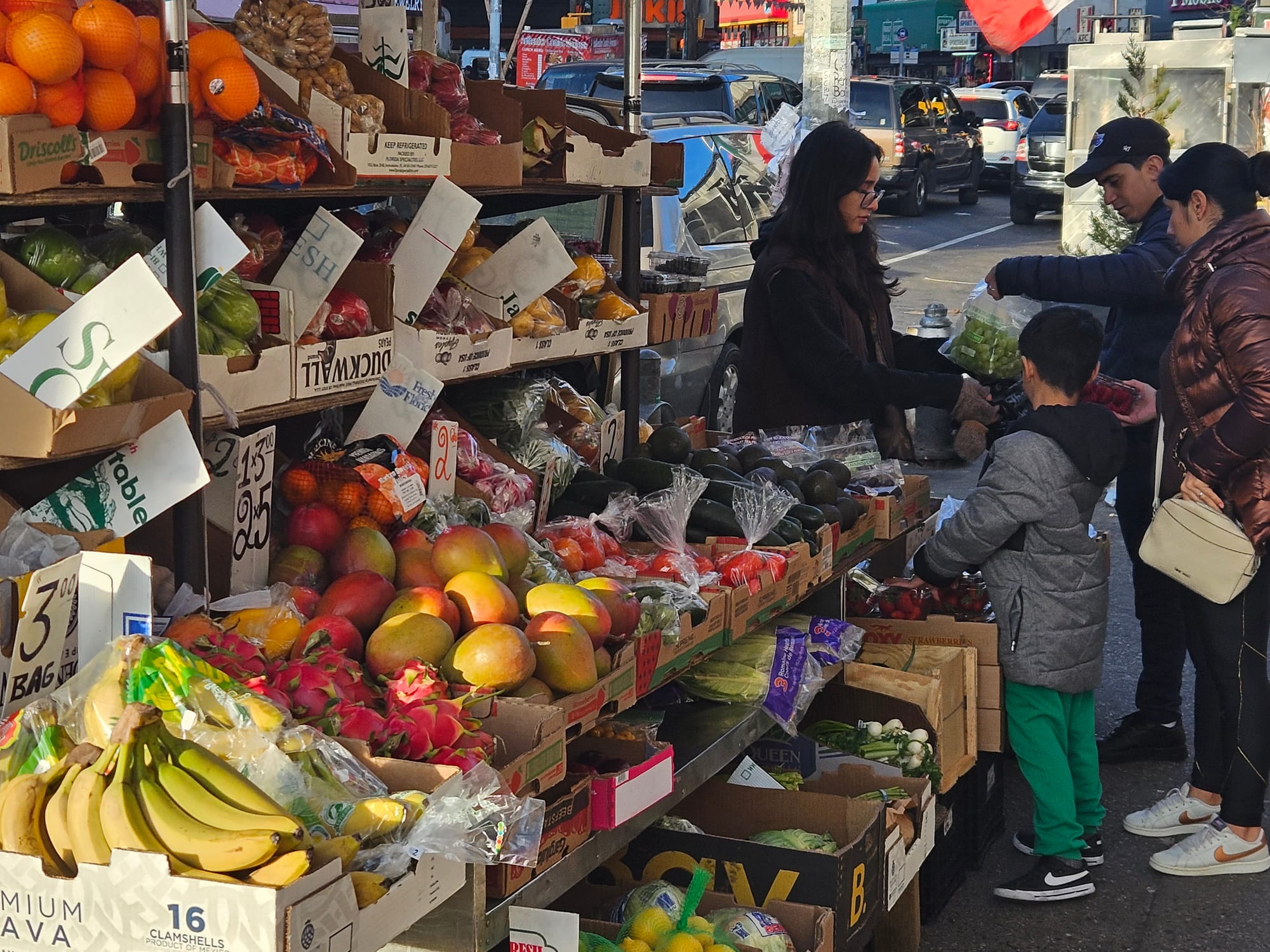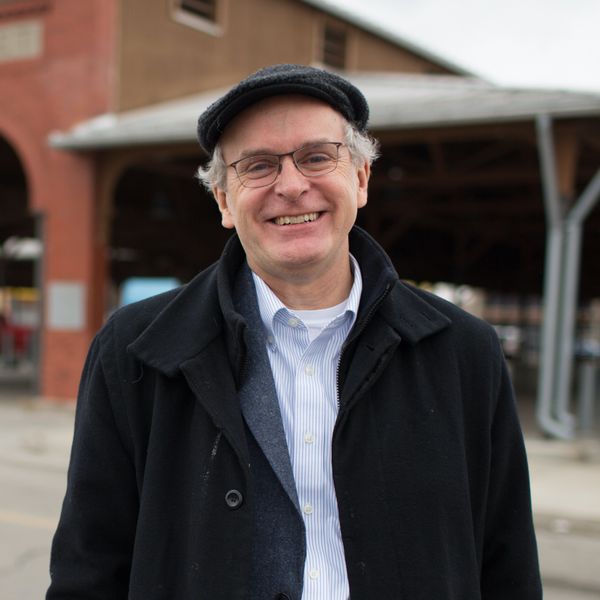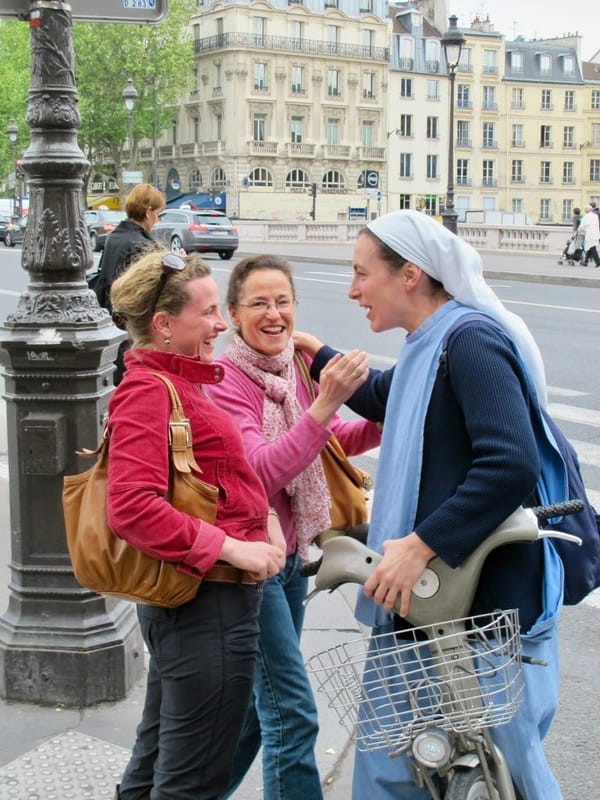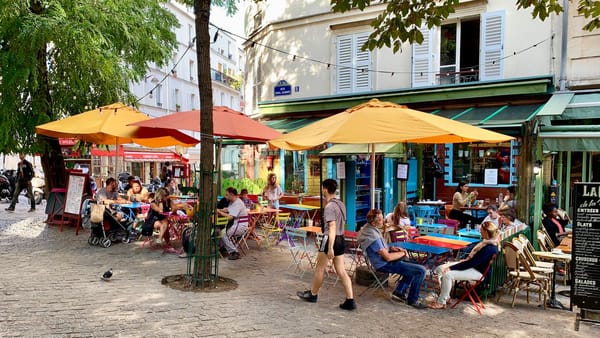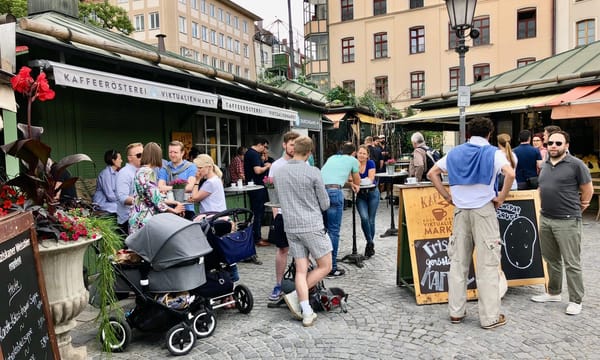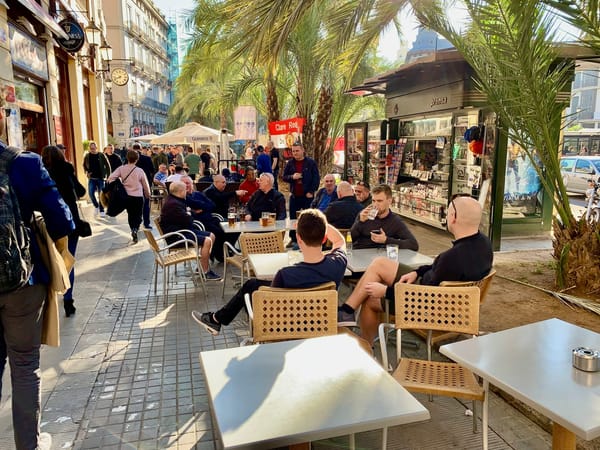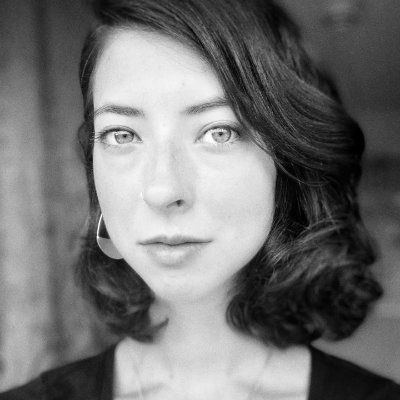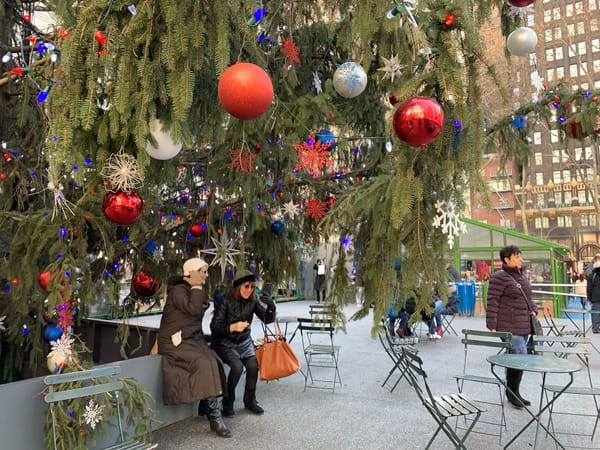A new vendor marketplace keeps the plaza's economic and social life thriving
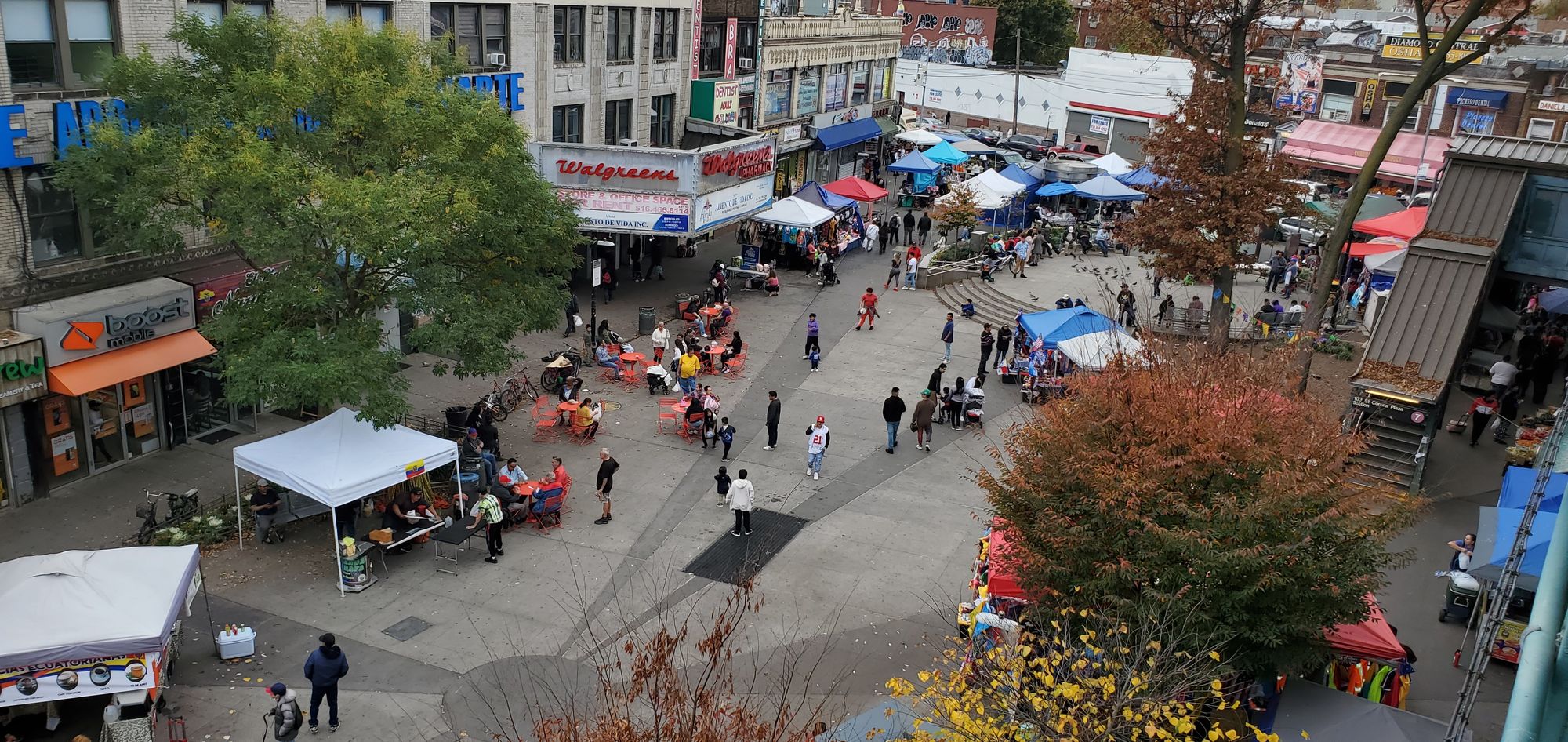
In the summer of 2023, the City of New York shut down nearly 80 street vendors selling on Corona Plaza in Queens because they were operating without permits. This is not an unusual story for street vendors in the city, who are frequently treated as common criminals for trying to make a livelihood in a public space. Also, it was no surprise that the energy dissipated quickly on the plaza after the vendors were evicted.
What is unusual is that the vendors are back – legally. Following public outcry, the New York City agencies working with Queens Economic Development Corporation and the Street Vendor Project, developed a new permit mechanism that enables the non-profit Corona Plaza Vendors Association to operate legally on Corona Plaza as a formal market. There is also now hope that the plaza's social and economic life will turn around. "It's a start," vendor leaders said in an article in the New York Times, and based on our observations, signs are positive.
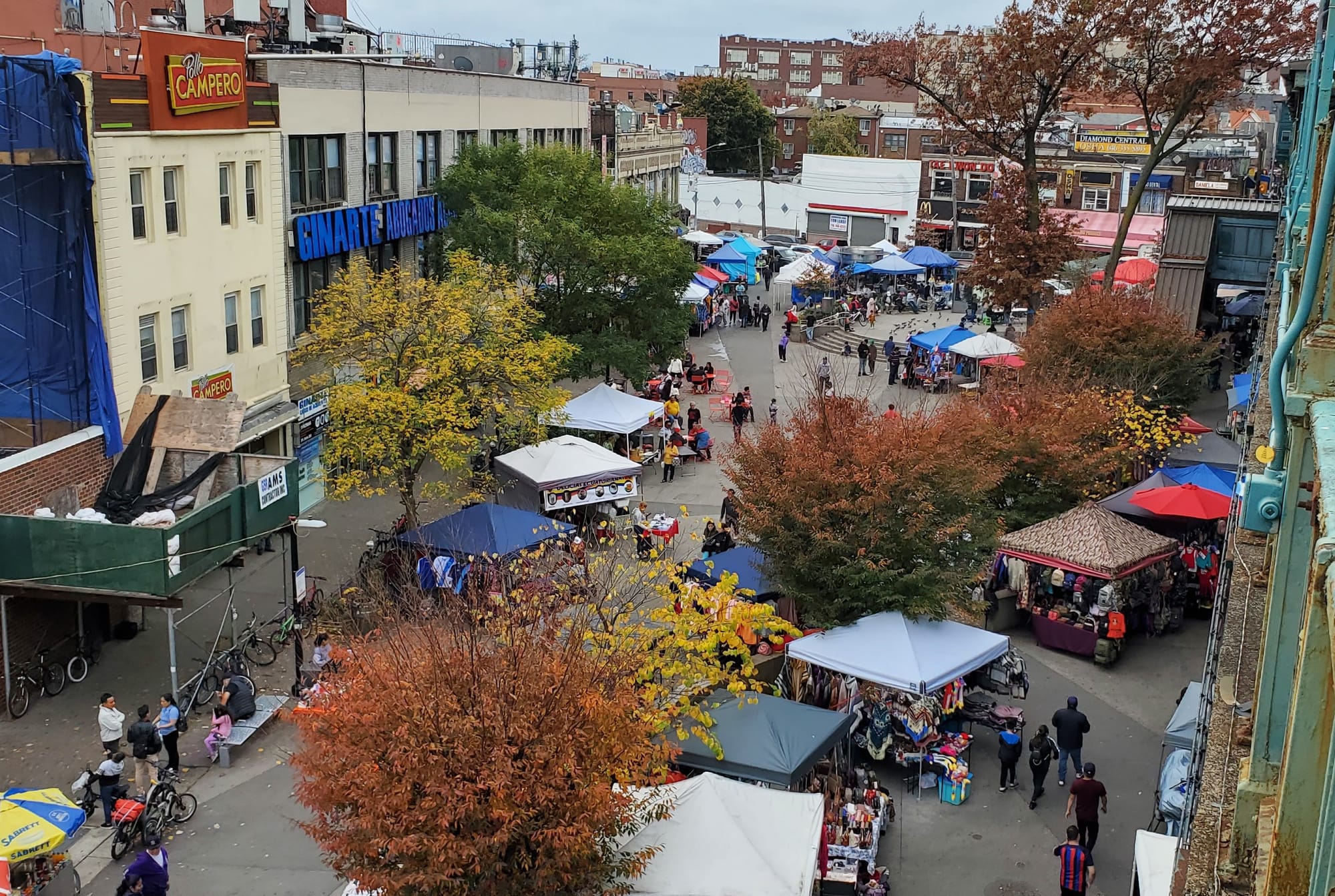
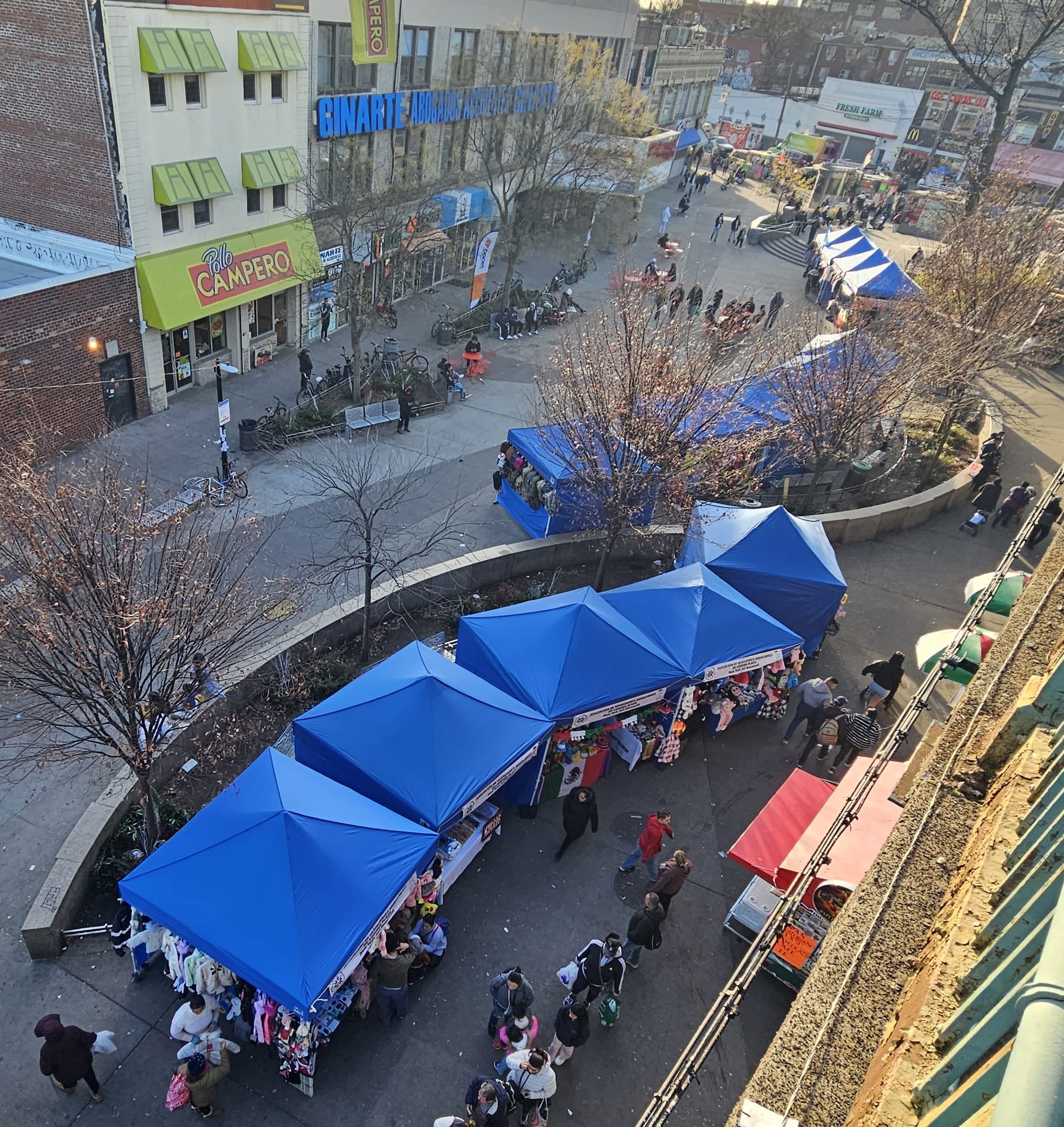
Plaza vendors before formalizing (left) and afterwards (right). Non-food vendors rotate in one of 14 tents.
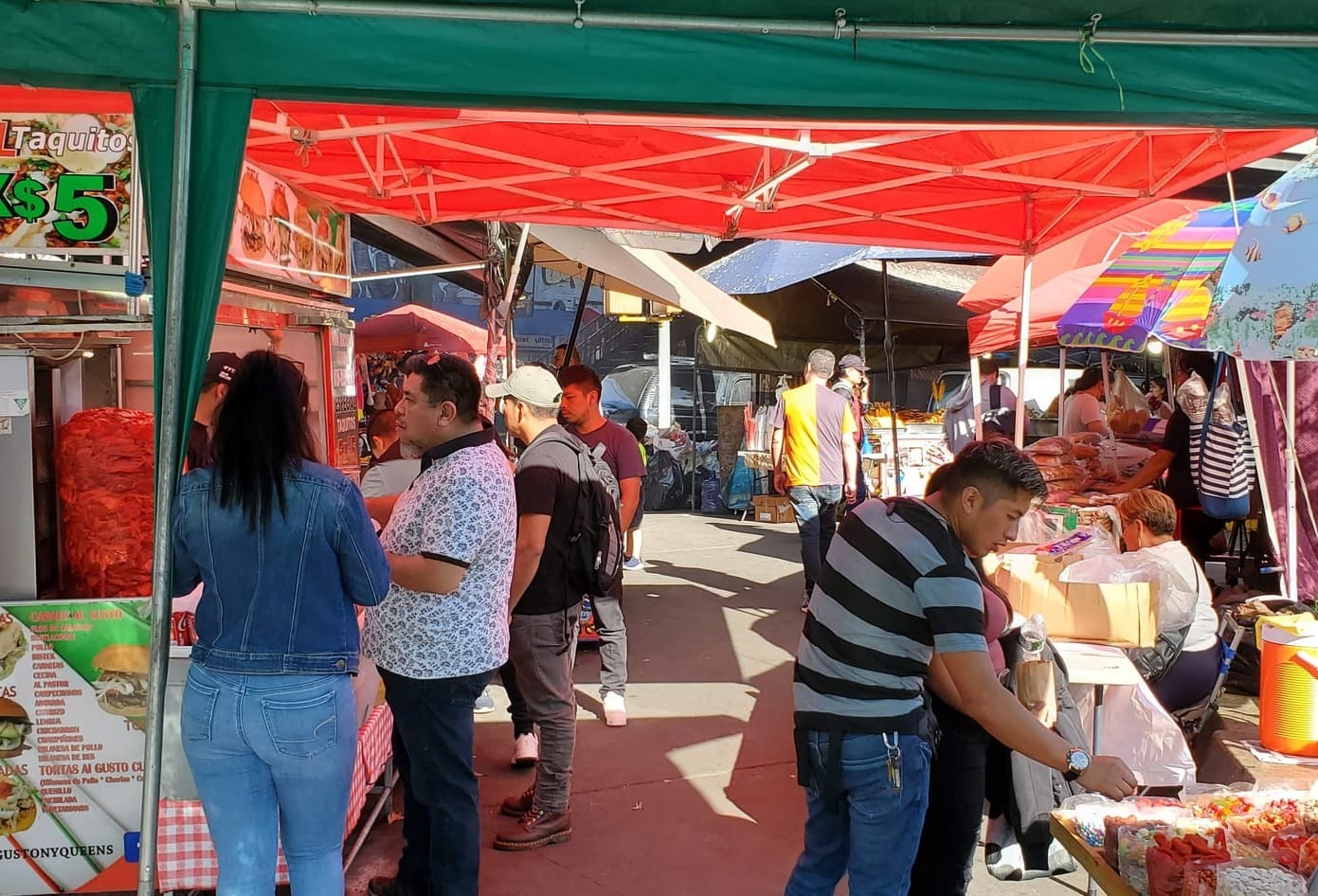
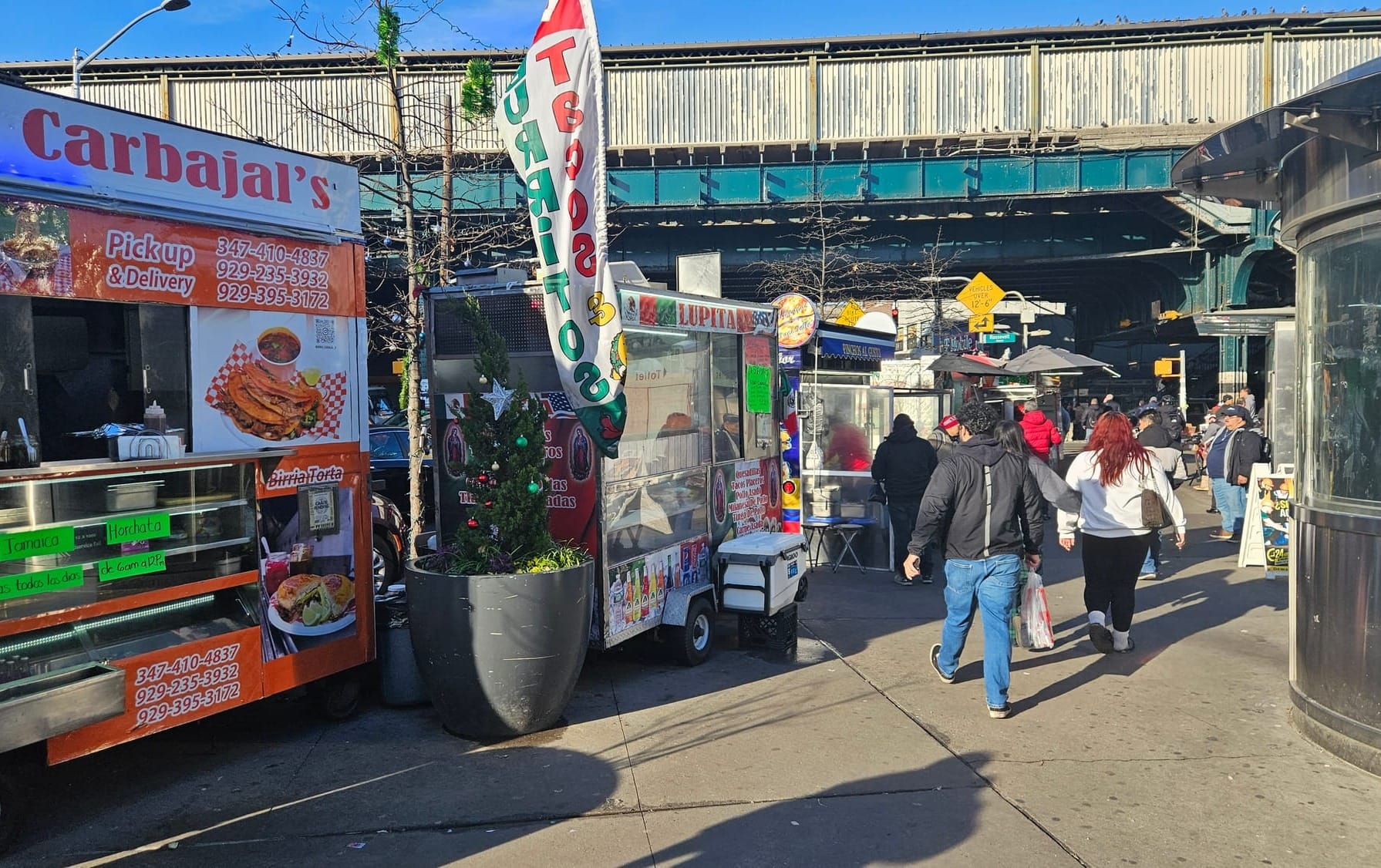
The Backstory
During the pandemic in 2020, LatinX immigrant street vendors seeking economic survival flocked to Corona Plaza, the heart of the Corona neighborhood in Queens that sadly was the epicenter of the COVID-19 epidemic in New York City. By the summer of 2023, some 80 vendors operated in an informal marketplace of prepared foods, produce, flowers, clothing, and other goods. Nearby, dozens of local and regular plaza users played games, met friends and family, attended cultural events, and watched the world go by.
Today, under the new city permitting system, ten food vendors operate from carts and have licenses from the city health department. Clothing, artisan, and other non-food vendors share 14 large popup tents on a rotating basis. (An outside operator will ensure compliance with city regulations, such as food safety and trash collection).
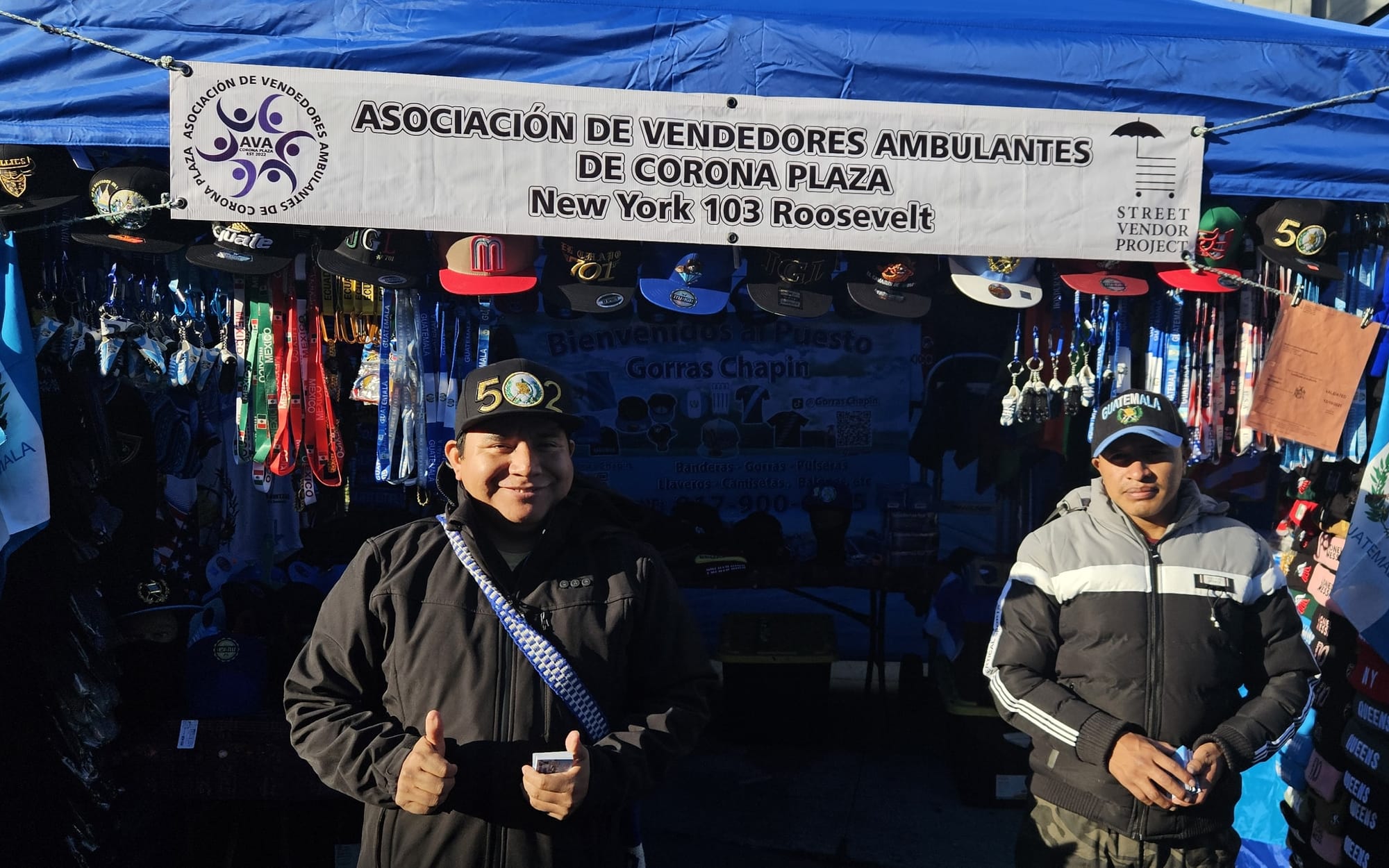
Studying the plaza and its uses
In the fall of 2023, we had the opportunity to study the plaza before its vending was temporarily removed, and when the space operated on a more ad hoc basis. We surveyed plaza users, vendors, and storefront businesses about what makes this plaza tick – and how it could be made better. We took most of the images in this article during the study to demonstrate the economic vitality of the plaza and the social connections it created.
Here's what we learned.
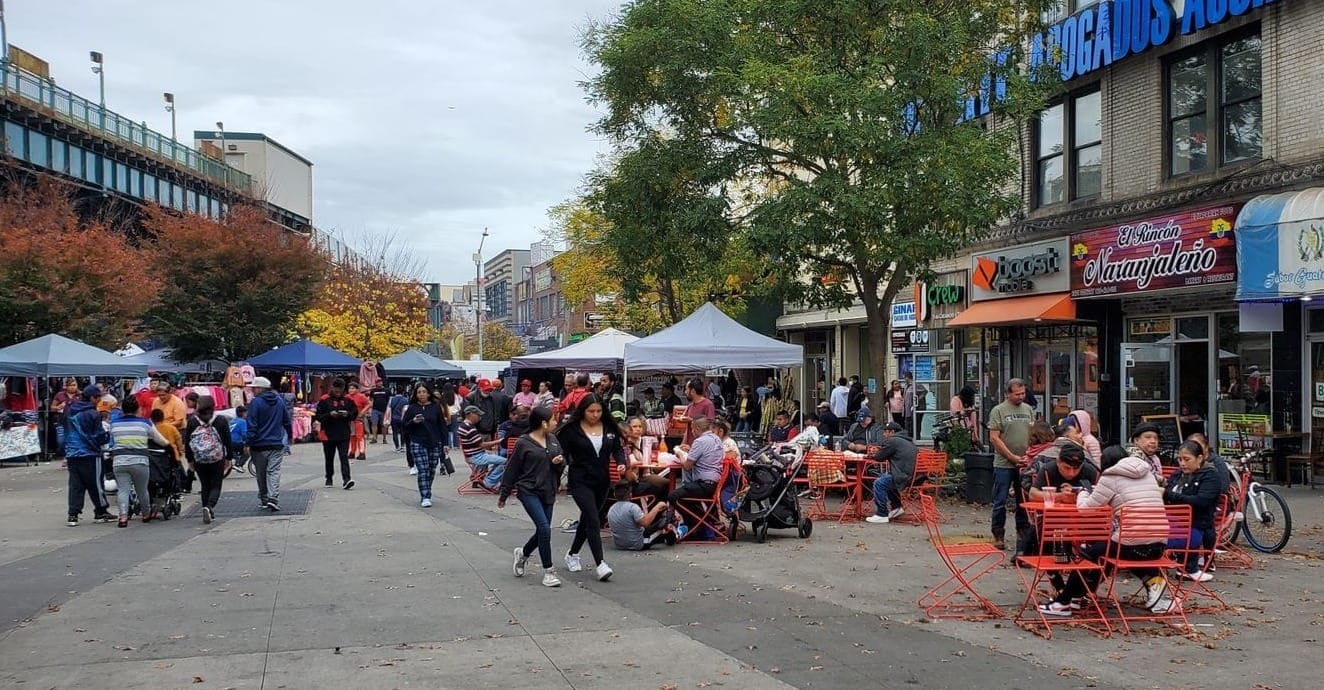
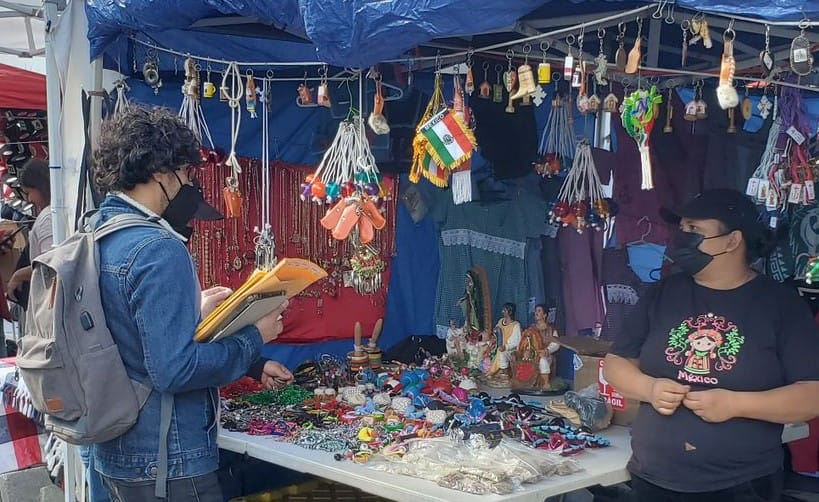
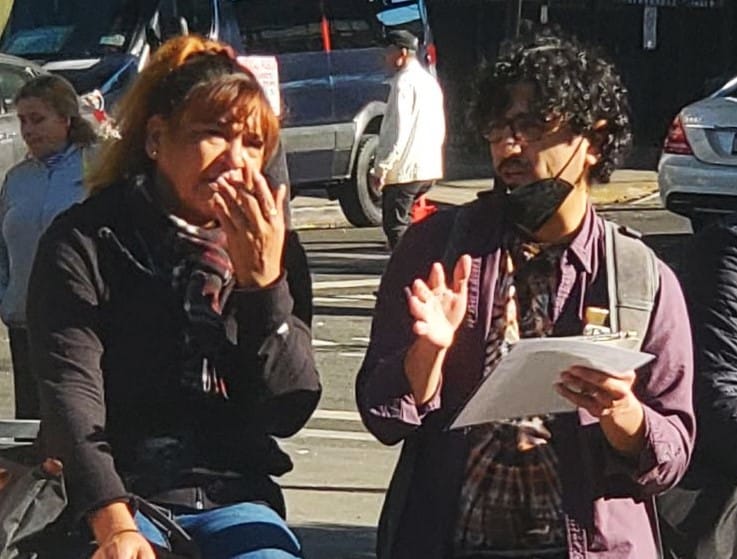
With the support of the Queens Economic Development Corporation and NYC Small Business Services, we had an opportunity to study the plaza. Surveys were conducted of plaza users, vendors, and storefront businesses. The report is available online in the Resource Library of marketcities.org.
Corona Plaza is for locals
About half the plaza users we surveyed live in Corona, indicating a strong connection with the neighborhood. But in fact, nearly all the vendors come from the neighborhood, as did half of the employees in its adjacent stores.
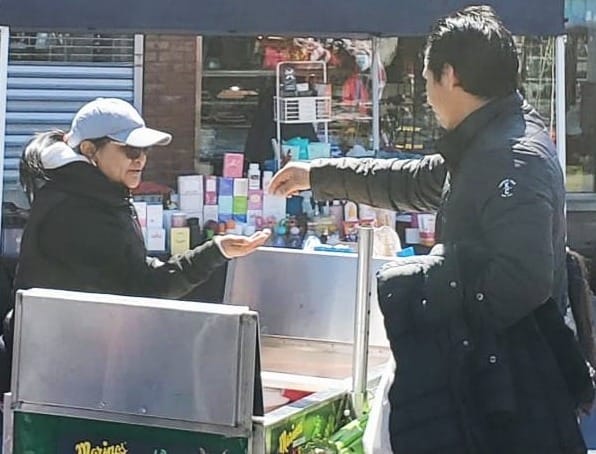
As a place where locals gather, it has become a natural place for local nonprofits to provide information and services and cultural events of all kinds.
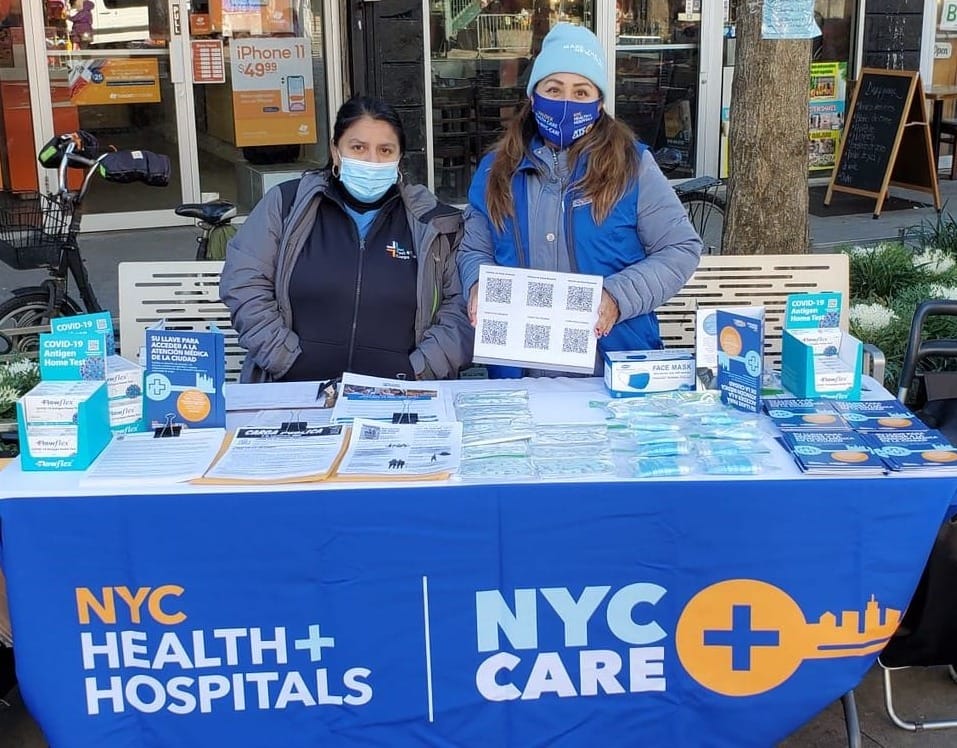
Corona Plaza attracts both social groups and "loners"
There is a rhythm to the life of Corona Plaza that varies with the time of day and day of the week, as well as seasonally. Movable tables and chairs are perfect for socializing and playing games.
About half the people surveyed had come to the plaza alone – but the other half came with friends or family.
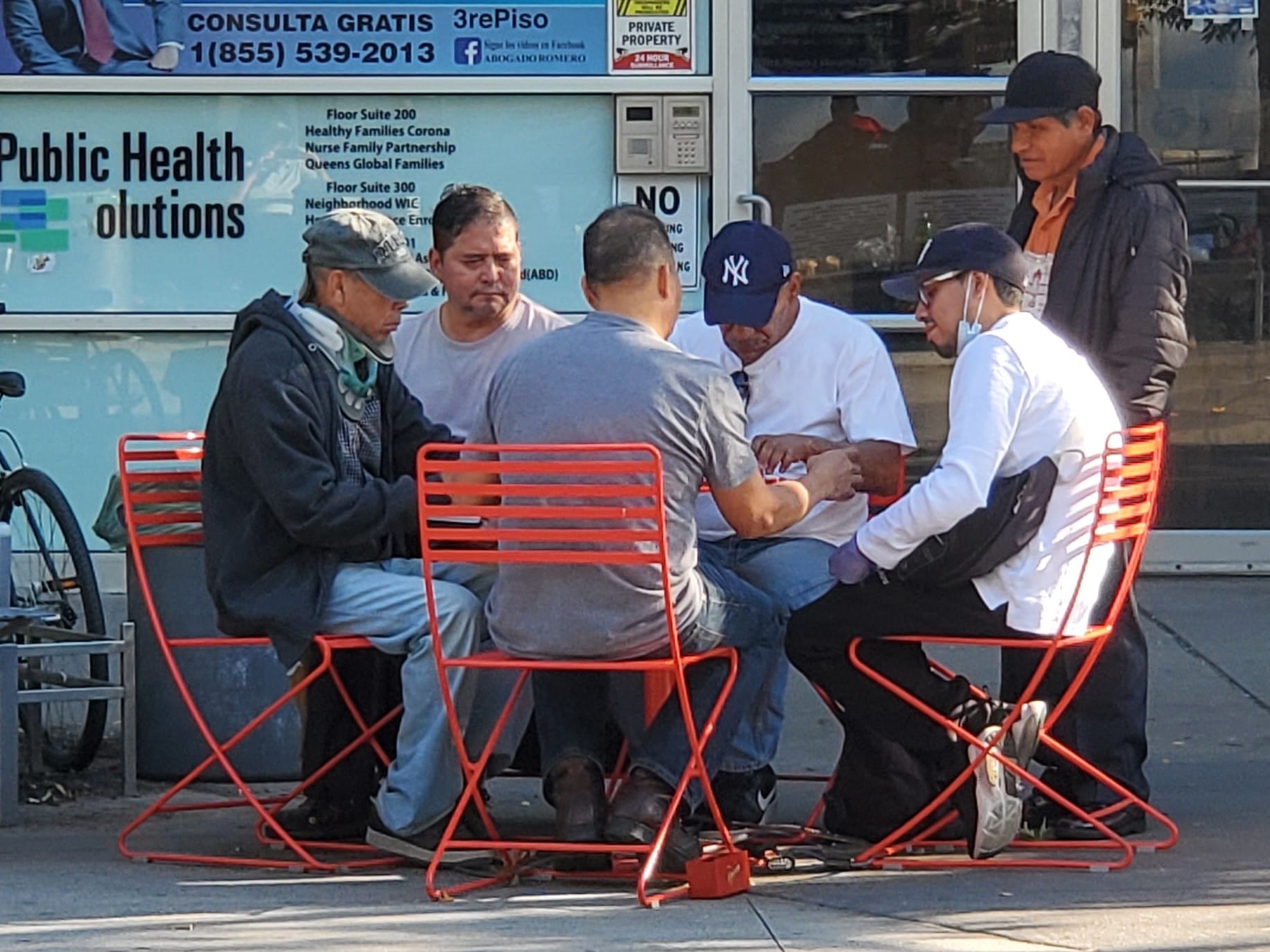
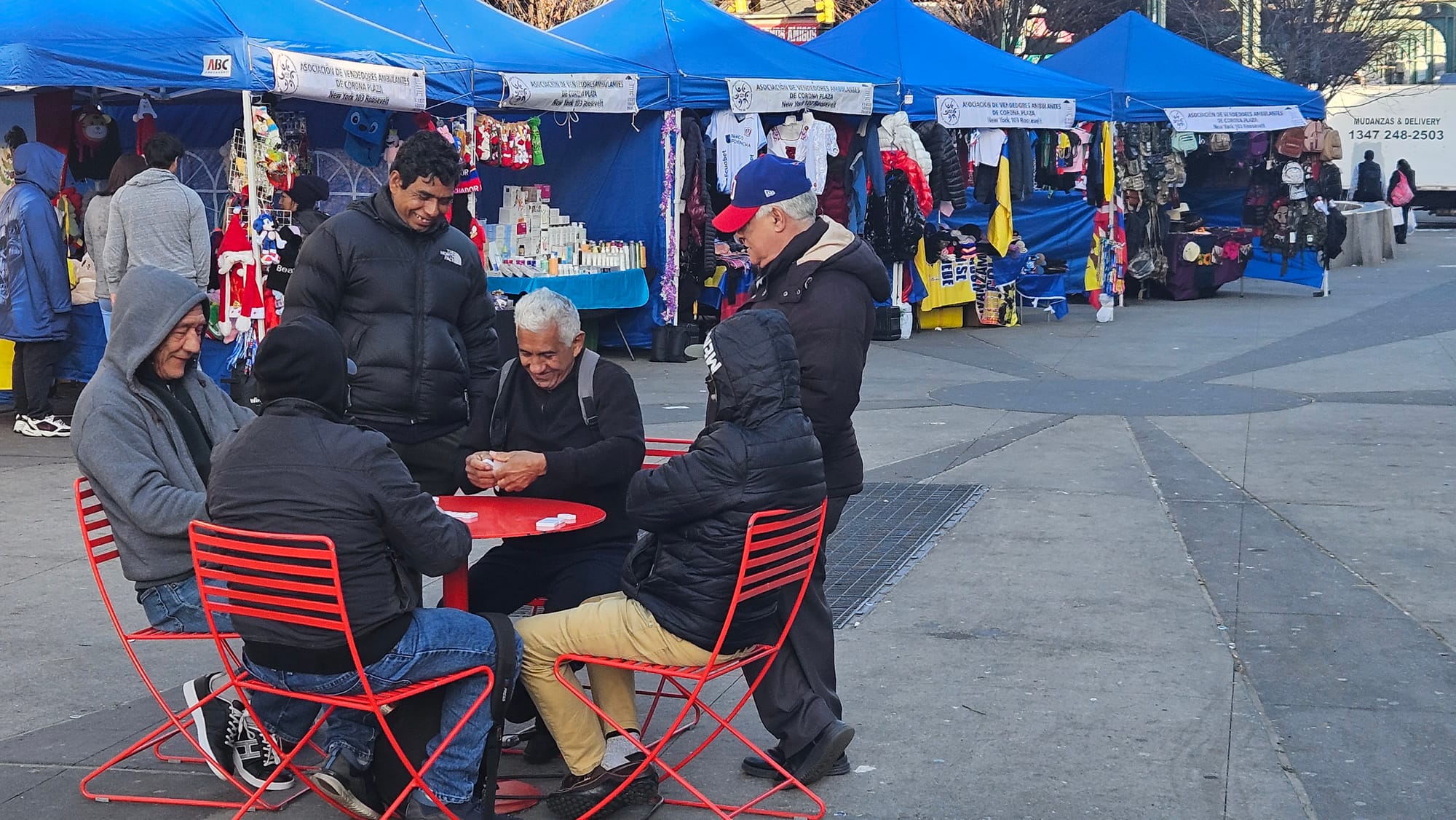
In a time when we are suffering from an epidemic of loneliness, Corona Plaza serves a critical function. Even people who are there by themselves enjoy indirect social connections as they people-watch, check texts on their phones, and chat with strangers with whom they couldn't interact if they were sitting alone at home.
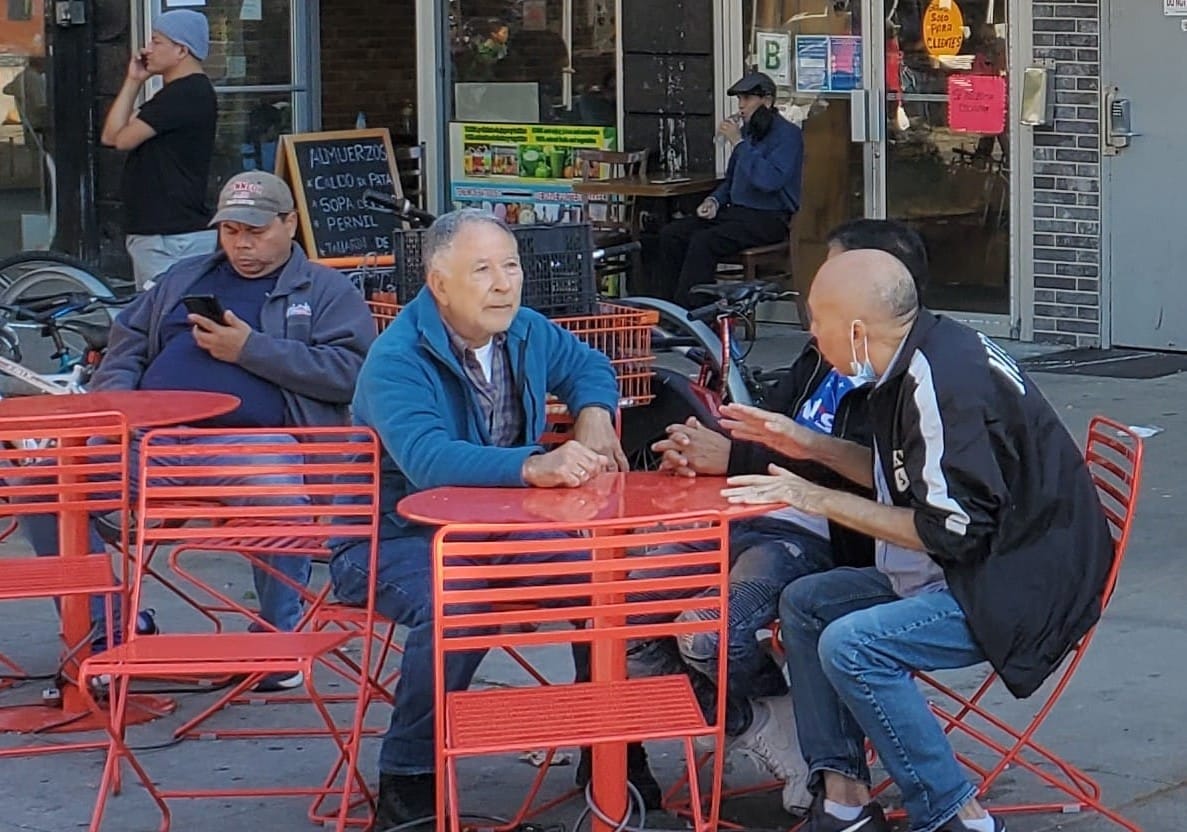
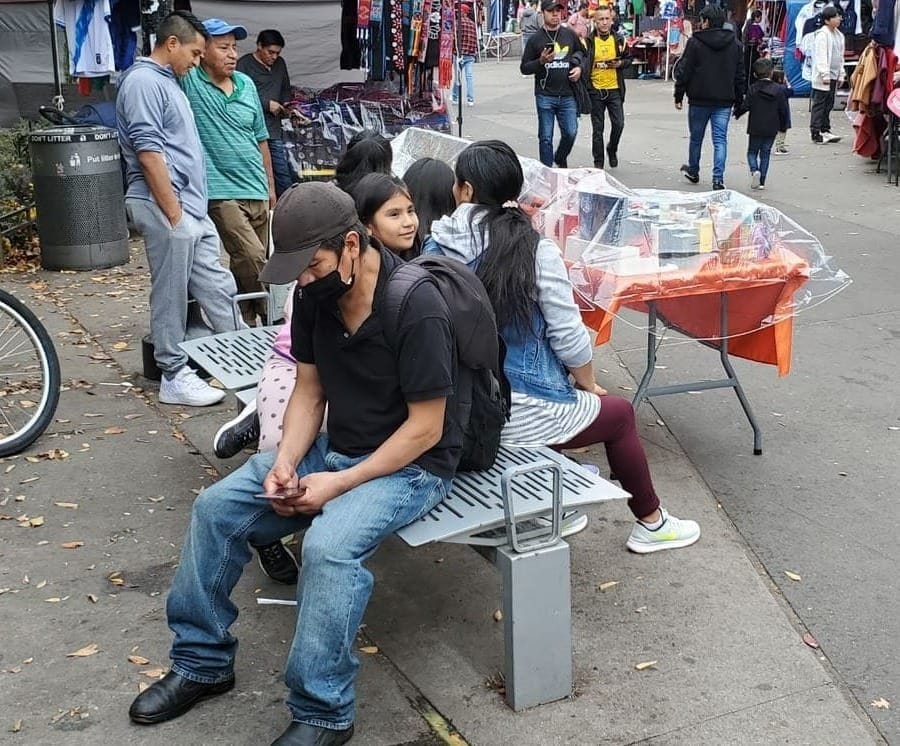
Families come to the plaza, especially on weekends, and socialize, play, or have a meal. Most play is ad hoc, and one of the top ideas for improvement from the people we surveyed was introducing more activities for children.
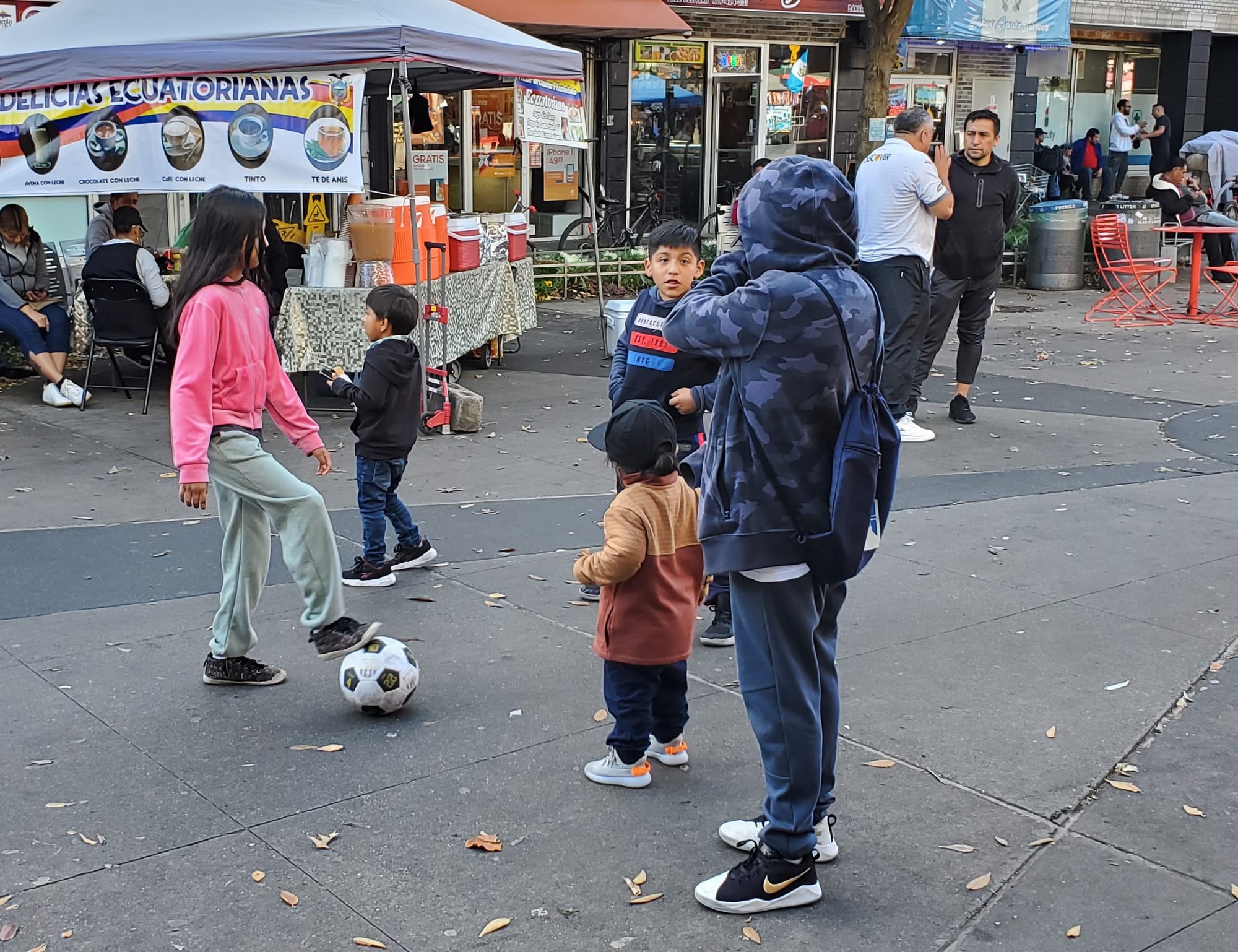
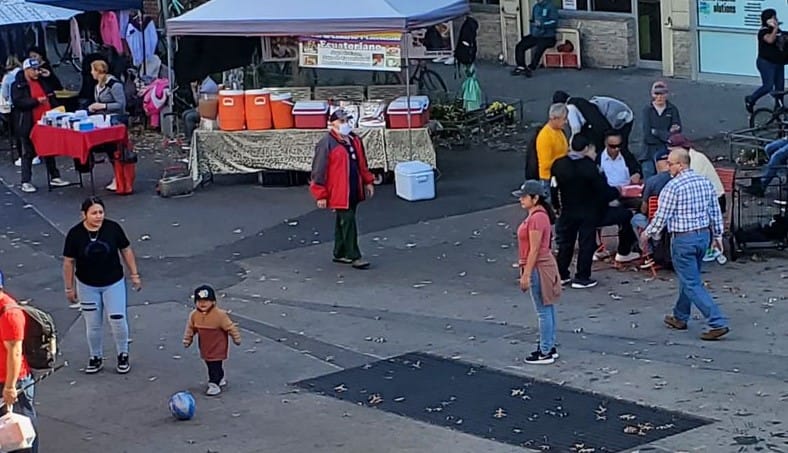
Commerce and social life go together
While in the past, Corona Plaza came to life during popular cultural events, it became a well-used public space on a daily basis once the vendors arrived. Even though vendors take a large section of the plaza, more people use the space than before because of the marketplace's energy and vitality.
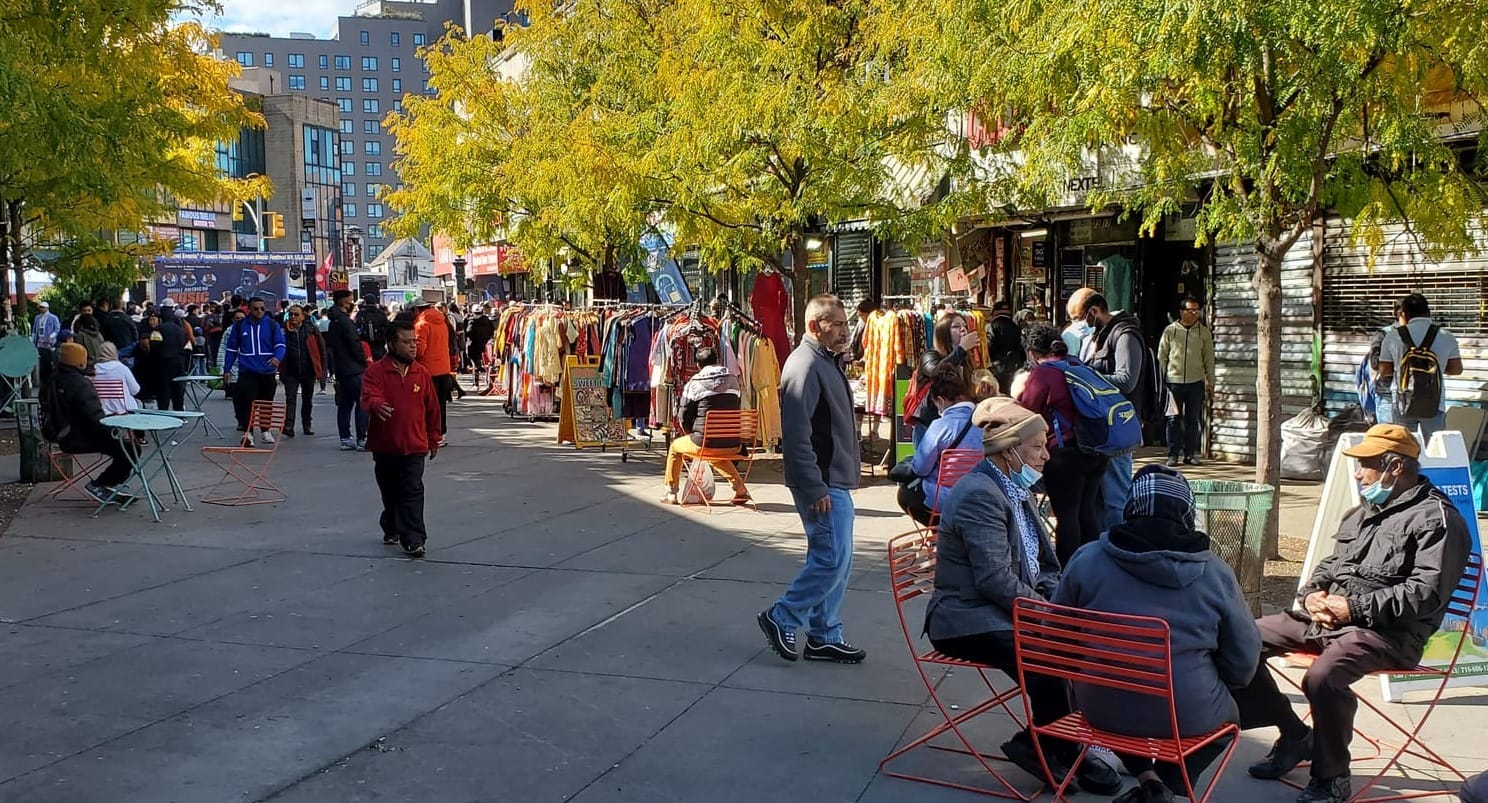
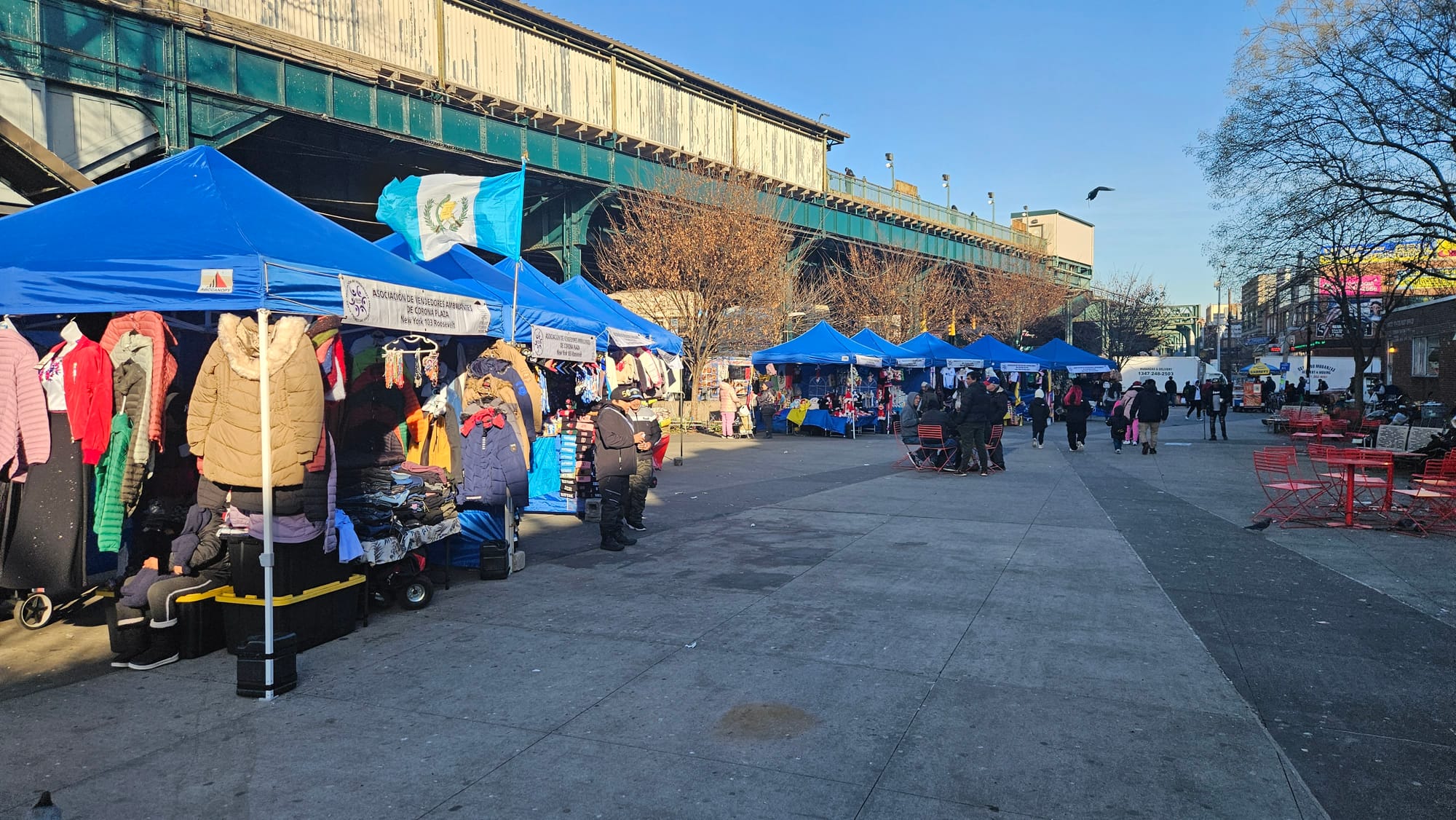
Before the shutdown of the vending, public space, and commercial uses more mixed up (left) than they are now (right). Credit(r): NIna Young
Whether it's in a storefront or at a vendor stall, the social life of Corona Plaza thrives around commerce, and the combination of the two options makes the place an ideal location for a business.
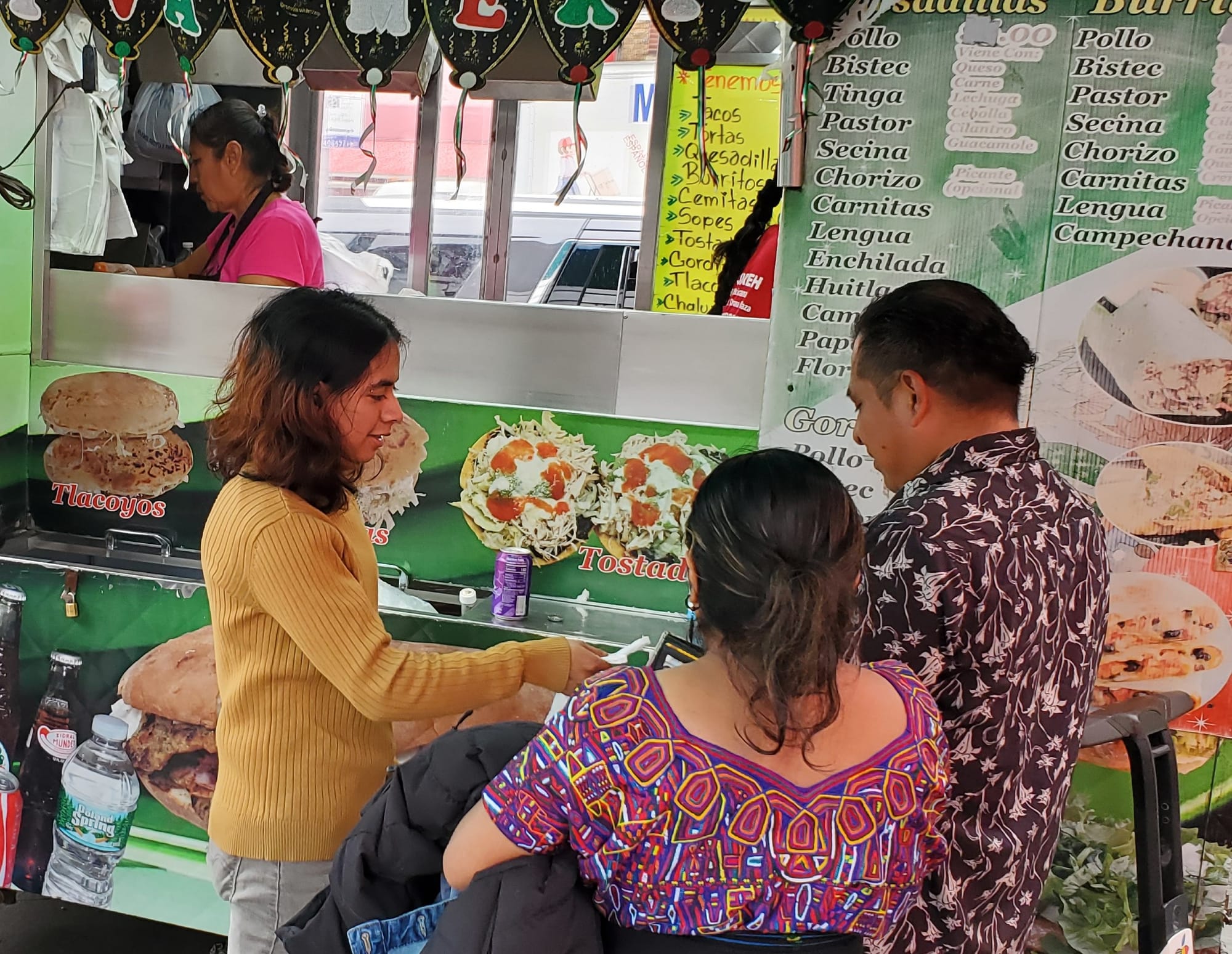
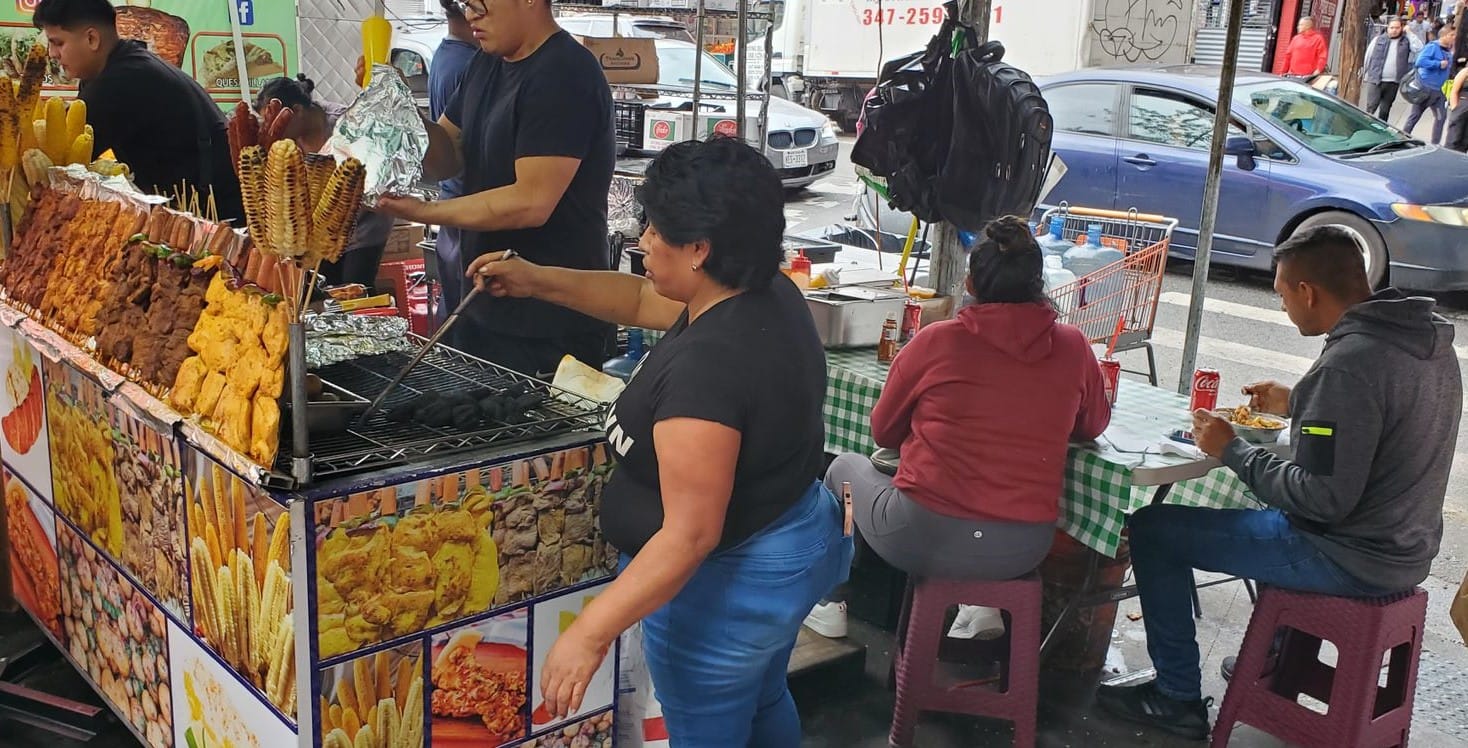
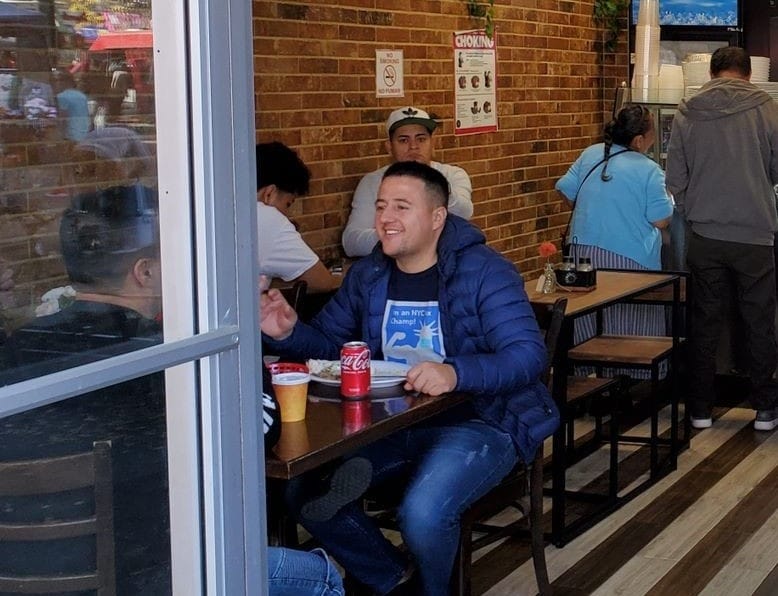
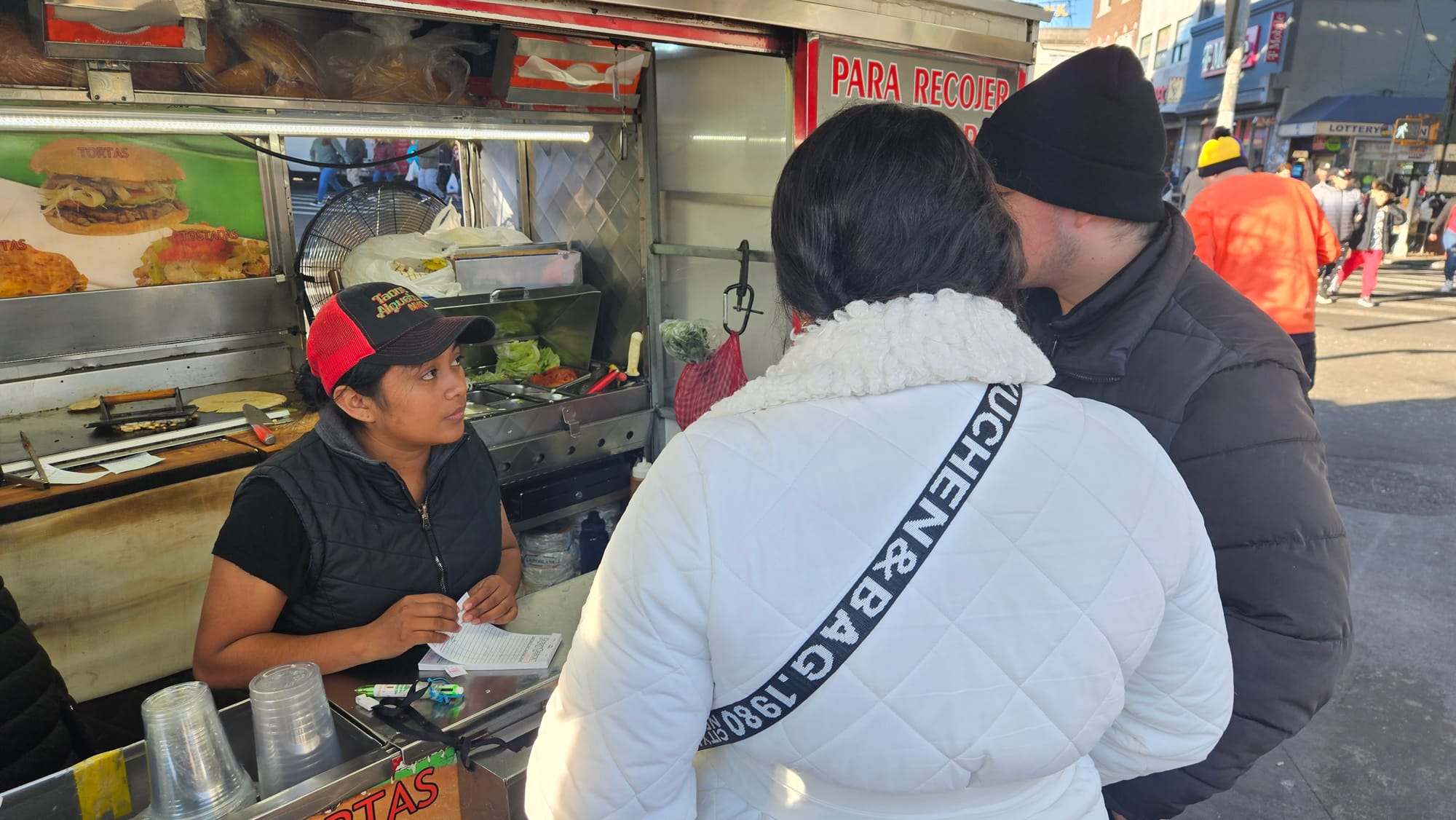
Being a vendor at Corona Plaza has been an economic lifeline for its immigrant vendors and offers economic empowerment specifically for women since most plaza vendors are women. We found that half of the vendors were earning most of their family income from selling at Corona Plaza, and the remaining half were "income patching" but were still earning income that made a significant difference to their families. The vending shutdown put many vendors at considerable economic peril.
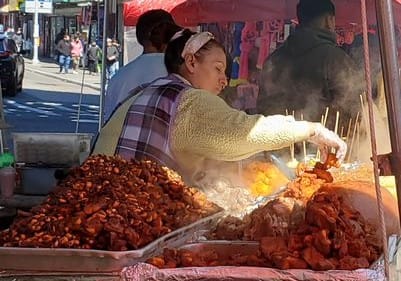
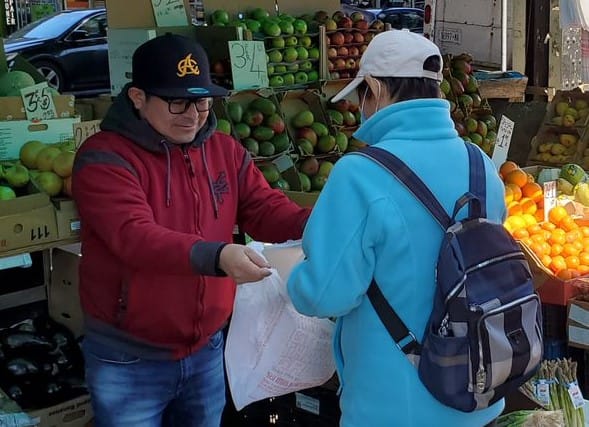

A weekly Greenmarket in Corona Plaza attracts primarily women who shop for affordable food grown and sold by local farmers. It's also an opportunity to socialize and meet with friends and family. Greenmarket was always permitted to operate on the plaza, so it was unaffected by the street vendor shutdown.
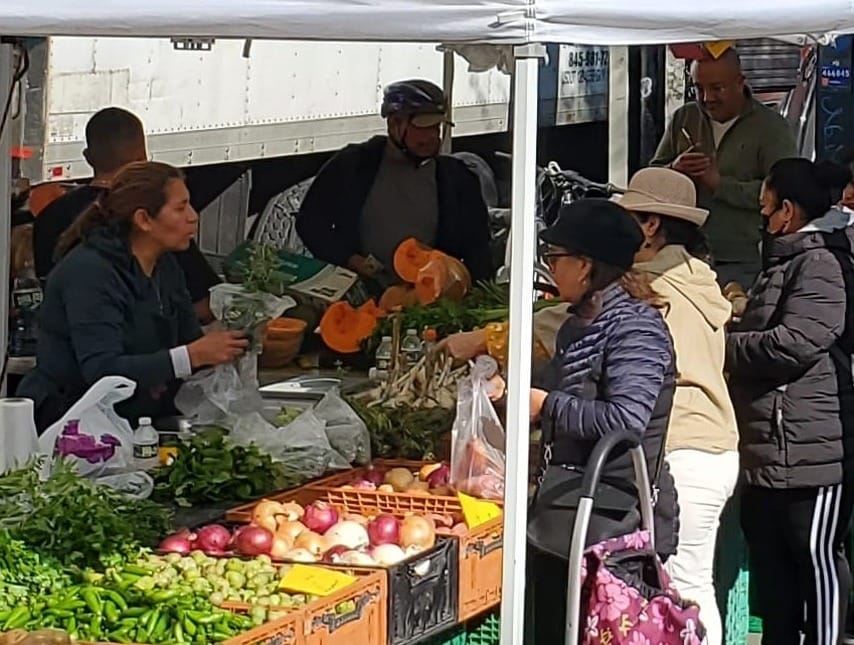
Popular cooking and nutrition classes provide an easy way to learn about health and nutrition at market workshops. They offer an opportunity for more interaction and to pick up coupons for discounts on fresh produce.
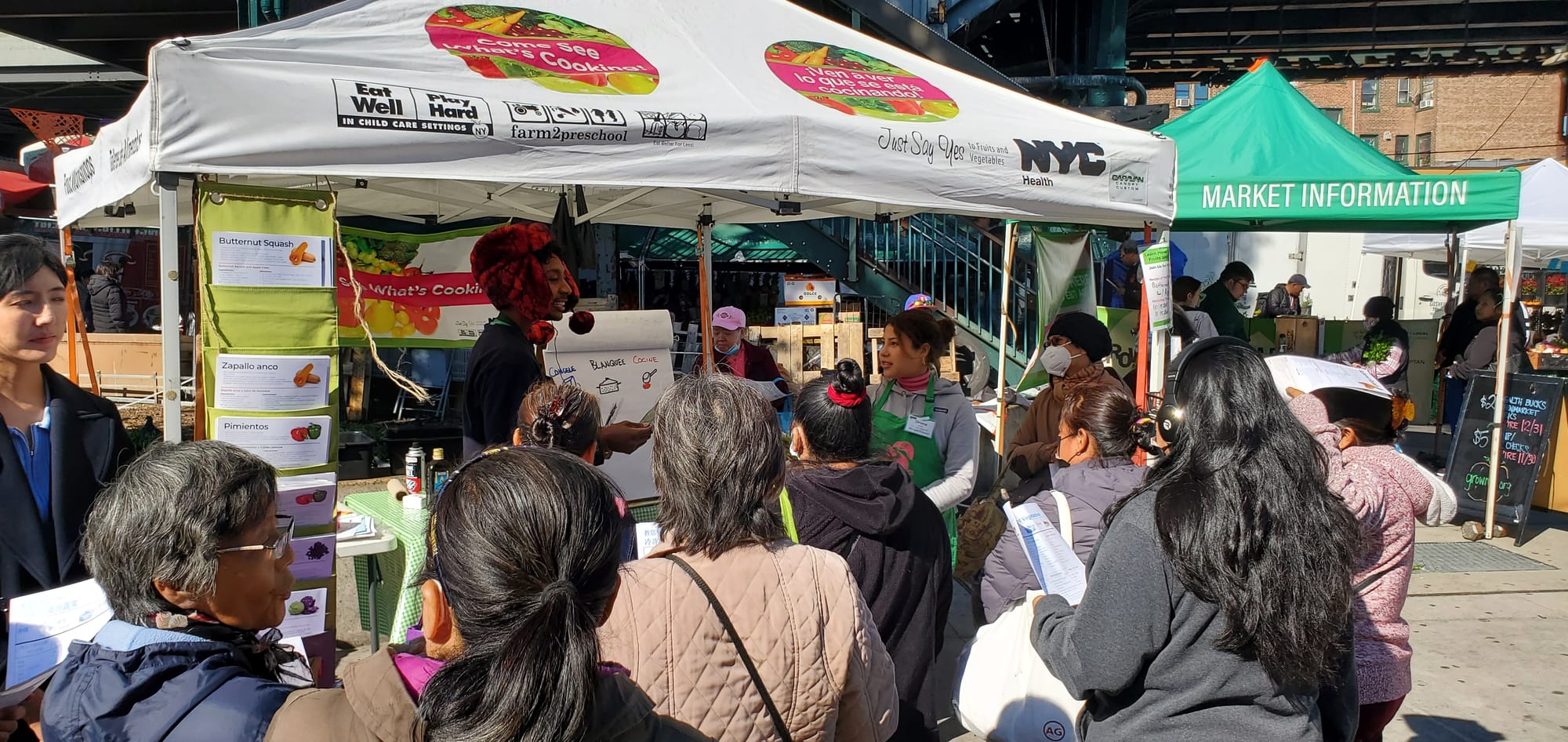
Charting the future of the plaza's design and programming
In a social place, engaging people and asking them what they want for the future is easy. A pop-up placemaking event proved popular during a community event for Three Kings Day. The top four choices people wanted for the plaza were play equipment for children, outdoor movies, educational programs, and more cultural festivals – all activities that would make the plaza an even better neighborhood social hub. People also wanted to infuse a stronger sense of community and culture by adding public art, signage, color, and festive lighting to the plaza.
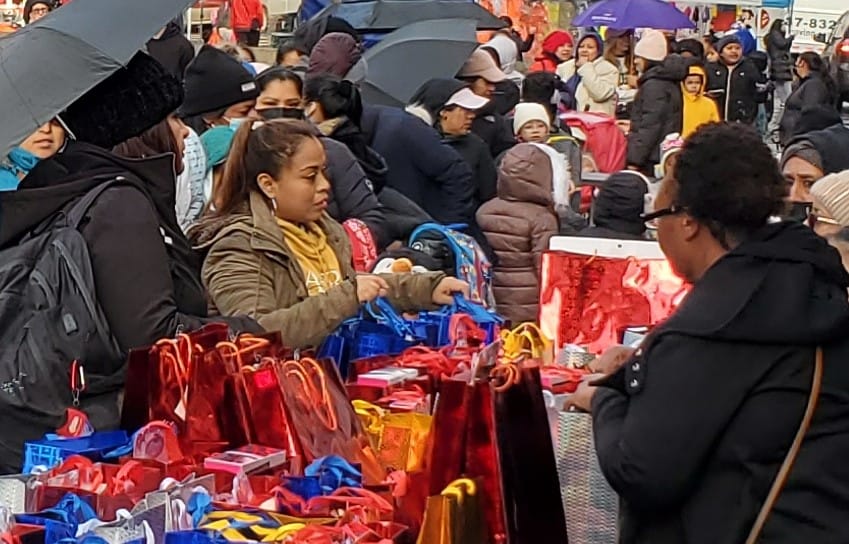
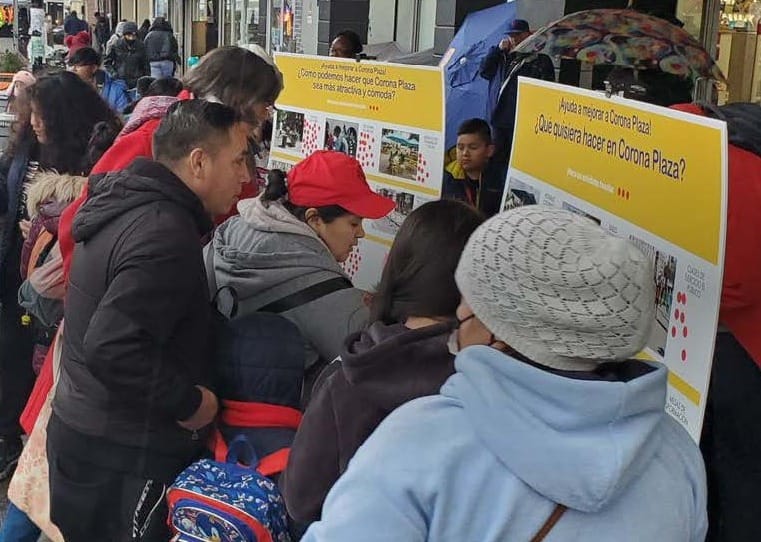
Takeaways
Corona Plaza vendors were victims not just of a targeted removal program but also of the whole system of street vendor regulation in New York City. Consider the inequity of how the city deals with other clusters of vendors. Operators of farmers markets and street fairs throughout the city, for example, already obtain permits from the city and then collect vendors' fees to enable them to operate legally. Yet, these systems have not been available to street vendors until now.
Corona Plaza is a model for a new form of public market for the city, but it is still a work in progress. As with any new system, plaza management will need to evolve and adapt, but it has already received an award for its innovative approach. Other clusters of "naturally occurring" markets in New York City could potentially benefit from the new permitting system, creating better public spaces and economic opportunities for street vendors who are primarily new immigrants.
The plaza became a social magnet because of its vital economic life. Before the vendors arrived in numbers during the pandemic, the plaza was not heavily used except during cultural events. Vendors work in synergy with a wide array of two dozen storefront businesses, together creating a more robust shopping destination. Because the plaza was bustling with shoppers all day, other people came just to hang out and socialize, and the overall use of the plaza increased.
Street vendors are an important part of thriving social and commercial life. It's time to stop treating them like criminals and put them back in business to activate more public spaces!
